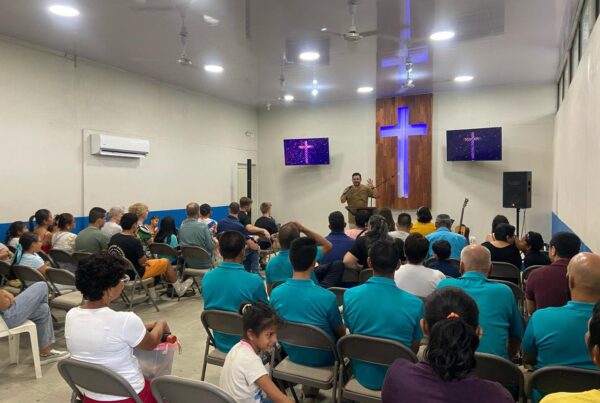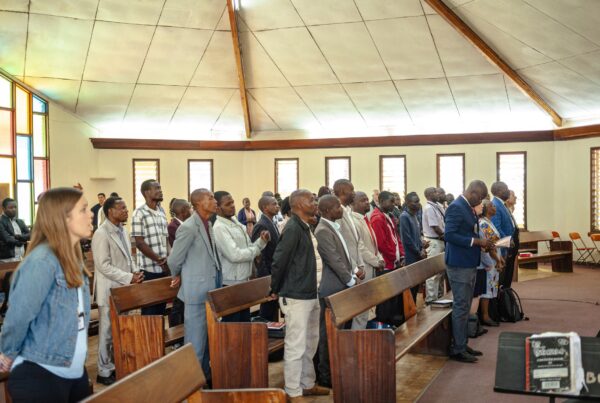One of the most important tasks for your church plant is to develop a clear plan for making disciples. After all, making disciples of the nations is what planting churches is all about.
From the beginning, God’s desire is that mankind demonstrate his good rule as they take dominion over creation. This creation mandate was passed down through Abraham when God said he would make him a great nation through whom all the nations of the earth would be blessed. Jesus extended this dominion and creation mandate to be one of making disciples in every nation. And finally, in Revelation, we see that people from every tribe and tongue will gather before the throne of God. This is the culmination of our grace-fueled efforts to make disciples and plant churches of these disciples among all nations.
Understanding discipleship as the core emphasis of the missio Dei grounds the purpose of our churches: We’re participating in God’s mission to make disciples of the nations and fill the earth with the knowledge of the Lord. So the focus of our discipleship should be the flourishing and vitality of the church. When not focused on building God’s church and disconnected from this purpose, discipleship focuses on individual transformation and devolves into Christian self-help. We must build churches with robust, mission-centered discipleship.
It’s crucial for your church to clearly understand what it means to make disciples. Your plan doesn’t need to be earth-shattering, but it does need to be theologically rooted, informed by church history, and biblically based.
Here are three steps to crafting a disciple-making plan:
1. Clarify your philosophy of development and discipleship.
This is the most important step. If you don’t have clarity here, then the process you implement is doomed to fail. One of the most significant challenges to our discipleship philosophy is getting rid of pragmatism. Many churches treat discipleship like any other program. Programs can be useful, but often turn people into cogs in a machine. If you approach discipleship like a machine, you’ll end up dehumanizing people—they’ll feel used by you. Discipleship is not just another program. It’s the mission.
The focus of our discipleship should be the flourishing and vitality of the church. Condividi il TweetA helpful question at this point is: What does a disciple at this church look like in their beliefs, affections, and behaviors? A biblical theology of discipleship does not need to be innovative to be clear. In fact, in much of our church leadership, we would serve ourselves better in the long term if we just looked to church history to inform our philosophy of ministry and discipleship. At our church, we’ve defined discipleship to be about loving God and loving others with our heads, hearts, and hands. We practice discipleship like the Puritans, who were preparationists and believed it would benefit new converts if they had already been included in some Christian practices within the church.
2. Decide how you will implement this plan in the short term.
You need to acknowledge that this plan may be subject to change. Let’s say your philosophy of discipleship is something like “Teaching people to love God and love others with all they are.” That’s a great start. Now, how will you do this? Will you offer classes? Will you provide mentorship? Will you create small groups or missional communities? How will you train those groups? How often? How will new people get connected to this process? How will you assess the effectiveness of those groups to implement the biblical vision of discipleship for your church?
The answers to these questions don’t need to be bulletproof, but you do need answers. Your process will have to adapt and change over time. So it’s important to hold your process and plan loosely while holding firmly your definition and philosophy of discipleship. Remember the goal is not a class, it’s about building up the body of Christ.
3. Take one step today to implement your plan.
Chunk it down into achievable, time-sensitive goals. This may be the hardest step. You need to discern who needs to know what, by when, in order to implement your discipleship plan. Once you discern this, then you need to just write that email or send that text to get things going.
Discipleship is not just another program. It’s the mission. Condividi il TweetOne important lesson I’ve learned is that I can wait too long to share my plan with others. I can sit back on a plan until it feels perfect. Then, when it’s time to share it or invite others into the process, it feels less like an invitation and more like a demand. It’s perfectly fine—in fact it’s better—to bring people along in the process of figuring out the steps. This keeps you open to feedback from people who will see things you cannot. It will also help others to understand how you see things.
If we don’t make a plan to make disciples, we will fail to make disciples. Figure out the philosophy of discipleship at your church and hold tight to it; it should rarely change. But hold the methods and means more loosely, because how you implement your church’s discipleship philosophy can change with your church’s context. In some places, churches have great freedom to openly live as disciples and disciple others, while in others, just meeting publicly is illegal.
Whatever your context, prayerfully make a plan for your church to make disciples, prayerfully implement your plan, and joyfully participate in God’s mission.










